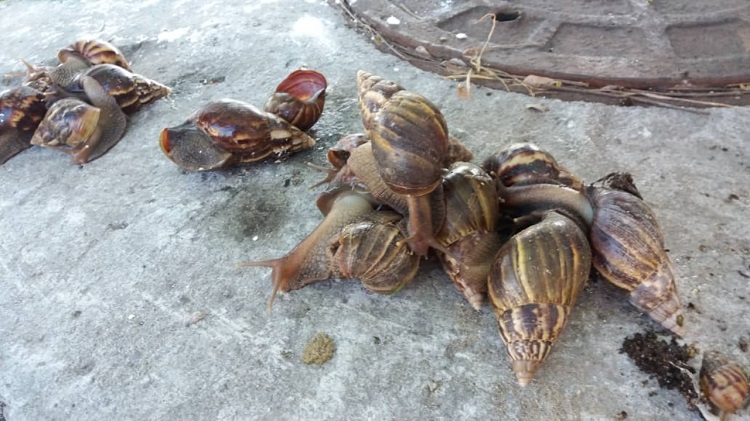
With a new outbreak of the giant African snail (CGA) and the capture of more than 18 thousand 715 specimens from May 2019 to the end of August this year, the measures to reduce the populations of this mollusk, considered among the 100 most damaging invasive alien species on the planet, are reinforced in Las Tunas.
Las Tunas, Cuba.- According to Reinier García Valverde, director of the Territorial Plant Protection Station in the provincial capital, control and tracking work is also carried out in each of the entities of the agriculture for phytosanitary and livestock personnel, and to date, no specimen has been reported in agricultural areas.
At the Velázquez district in this city, where the majority has been discovered, measures are taken to prevent the proliferation of the specie. In this sense, the provincial directorates of Public Health and Agriculture, the mass organizations in each community, and other organisms implement strategies to avoid its dispersion; including training and practical workshops to teach the correct way to capture the snails.
Despite the epidemiological situation that the country is experiencing with the presence of the SARS-CoV-2 virus, the confrontation with this dangerous mollusk has not diminished in the national territory, because it can be a contaminating agent of the larvae of Angiostrongylus cantonensis, a pulmonary parasite of rats, which also causes eosinophilic meningoencephalitis in humans.
It is appropriate that at this time of year the search and capture of this species harmful to nature and man are extreme, as the weather conditions are prone to its development and the recent rains together with the weeding of inhospitable places contribute to its spread.
The health authorities here inform that before the sighting of the specie the most important thing is not to have physical contact without protection, and immediately notify its presence in Plant Health or in the Provincial Center for Hygiene, Epidemiology and Microbiology, in addition to complying with the guidelines that prevent infection.
Faced with such a situation, it is essential that the community, with the support of the concerned health authorities, be in full surveillance of the possible development of this animal, which is very little perceptible in its first stage of life.





